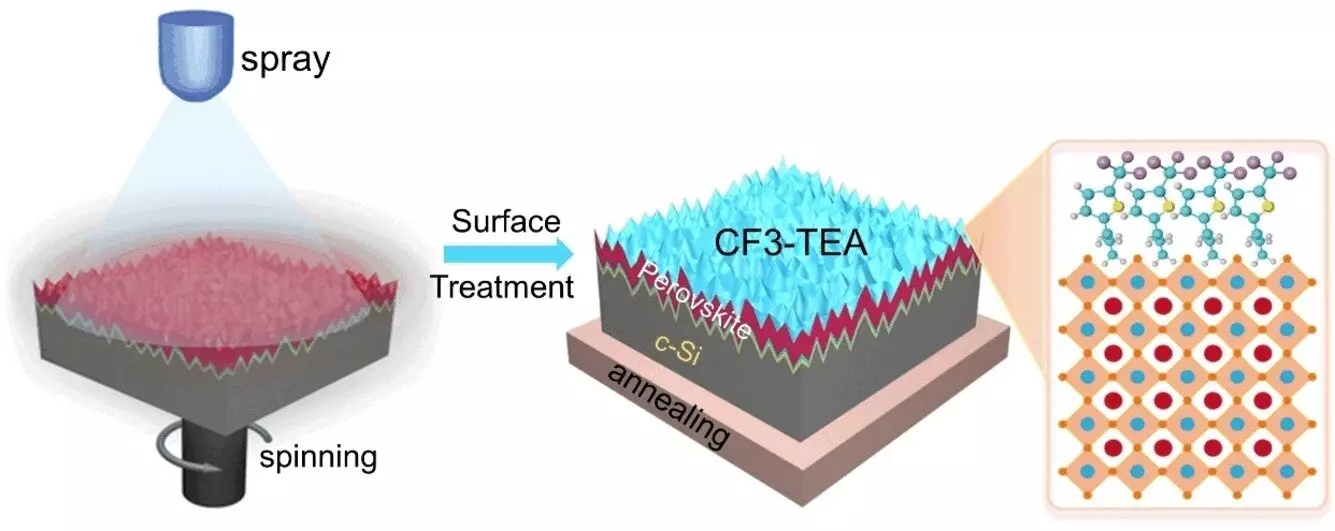Solar energy has long been hailed as a promising solution to our energy needs, but the efficiency and cost of solar panels have often been barriers to widespread adoption. However, a recent breakthrough in the field of solar cell technology may change all that. A research team has discovered that a coating of special organic molecules on solar cells could revolutionize the way we harness solar energy.
Traditionally, solar cells have been made of silicon, which absorbs mostly red and near-infrared light. However, the development of tandem cells, which are made of two different semiconductors that absorb different wavelengths of light, has allowed for better exploitation of the entire spectrum of sunlight. One of the primary contenders for use in tandem cells is perovskite, which efficiently uses visible light.
The Challenge of Coating Microtextured Silicon Wafers
While silicon wafers produced by the Czochralski process with microtextured surfaces are significantly cheaper than those produced by other methods, coating these wafers with perovskite has posed a challenge. The process results in many defects in the crystal lattice, which affects the electronic properties of the solar cell. This leads to a decrease in both efficiency and stability of the perovskite layer.
To address this issue, a research team led by Prof. Kai Yao has developed a strategy for surface passivation using a thiophenethylammonium compound with a trifluoromethyl group (CF3-TEA). By applying this organic molecule using a dynamic spray coating process, the surface defects of the perovskite layer can be smoothed out. The high polarity and binding energy of the CF3-TEA coating effectively suppress nonradiative recombination and adjust the electronic levels for better electron transfer.
Impressive Results
The surface modification with CF3-TEA has allowed perovskite/silicon tandem solar cells based on common textured wafers made of Czochralski silicon to achieve a remarkable efficiency of nearly 31% while maintaining long-term stability. This breakthrough has the potential to revolutionize the solar energy industry by making solar panels more efficient and cost-effective, paving the way for a new generation of solar panels that could power our homes and cities for years to come.
The use of organic molecules in coating solar cells represents a significant advancement in solar cell technology. By addressing the challenges of coating microtextured silicon wafers with perovskite, researchers have made significant strides in increasing the efficiency and lowering the cost of solar panels. With further research and development, this technology could lead to a brighter, more sustainable future powered by clean and renewable energy sources.


Leave a Reply